Introduction
Introduction
When people think of weight loss, they often think of sweating. Numerous individuals link increased sweating with a higher rate of fat burning. You’ve likely seen people at the gym wear plastic suits or even extra layers so they can sweat more with the idea that they will be able to slim down faster. So is sweating actually a signal that you are losing fat, or is your body just regulating itself to cool you down? In this article, we explore the science behind sweating and weight loss, dispel popular myths about sweating, and outline actionable recommendations for anyone trying to better understand the relationship between sweating and weight loss.
What is Sweating?
Sweating is how your body cools itself. During physical activity, hot weather, or stress, your body temperature increases. When this happens, your sweat glands release moisture (mostly water and salts) to your skin. As this moisture evaporates, it controls your body’s temperature to prevent overheating.
There are two primary types of sweat glands:
Eccrine glands – They are located throughout the body and produce watery sweat to cool the body.
Apocrine glands – They are located in areas like your armpits and produce thick sweat related to hormones and or stress.
Sweating is necessary for your body to cool itself; however, sweating does not burn fat. You temporarily lose water weight when you sweat, but soon after, your weight will return once you hydrate.
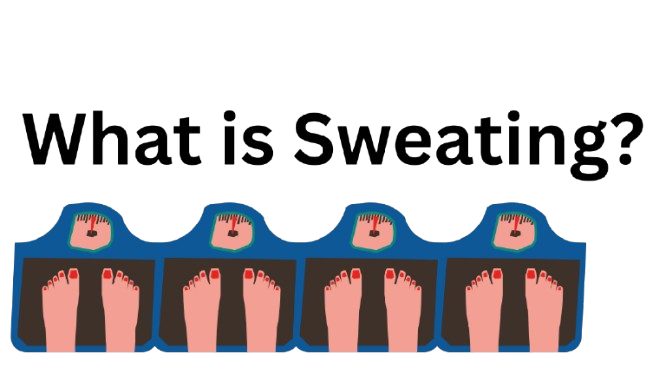
Does Sweating Help with Weight Loss?
Although sweating can lower the number on the scale, the drop is temporary. Here’s why:
Water loss – When you sweat, you lose fluids, not fat. If you step on a scale immediately after an experience in the sweat zone, you may weigh less, but as soon as you drink, weight goes up.
Calorie burning correlation – While sweating doesn’t burn fat, the activity that makes you sweat – running, cycling, strength work – burns calories. That is where the true fat loss comes from.
Body temperature – Some people sweat more than others because of genetics, environment, and their fitness level. Just because you sweat a lot doesn’t mean you burned more calories than someone who doesn’t sweat as much.In conclusion: sweating is not a direct measurement of fat loss, but becomes associated with activities that burn calories.
Understanding the Difference Between Water Loss vs. Fat Loss
One of the most important concepts for you to understand is the difference between the two:
Water weight loss – Usually when you step on the scale right after a sweating session (whether it’s from sweating, sauna, hot yoga, etc.) you will see rapid drops on The scale, in general, is typically attributed to the body’s dehydration. It’s a loss, but mostly this is just your body losing water weight which is temporary in nature.
Fat loss – is when your body uses its fat stores for energy. This can only happen if you are in a consistent caloric deficit (burning more calories than you are putting in). Just equate fat loss to long-term and gradual versus immediate.
Moving forward with managing weight in a healthy way. Focus on caloric deficit through food intake plus food output, versus weight loss through body temperature and sweating to create immediate results.
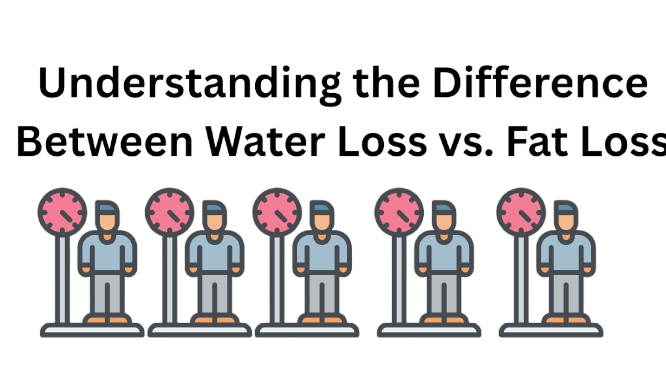
Factors that Affect How Much You Sweat
Although most people sweat simply because they are trying to regulate body temperature and cool their bodies down, not everyone sweats the same! Here are a few things to consider that factor in how much you will sweat at the end of your workout.
Genetics – Some people simply have more active sweat glands than others.
Fitness level – People with higher fitness levels tend to start sweating faster than someone with a lower fitness. This is basically to allow your body to begin efficiently regulating your body temperature.
Body size – Individuals with larger body sizes produce more heat, which results in increased sweating.
Environmental temperature and humidity – People will sweat faster in hot and humid weather.
Hydration – People who are well-hydrated tend to sweat more than those who are dehydrated.
When you’re sweating more, that doesn’t mean you are burning more fat, it merely means that your body is cooling itself down very well.
Are Calories Burnt Through Sweat?
Sweat on its own does not lead to calories burnt, but the activities that make you sweat do. For example:
30 minutes of running at a moderate speed will lead to 300–400 calories burnt.
Cycling can expend between 250 and 500 calories in a thirty-minute session, contingent upon the level of intensity.
High-Intensity Interval Training (HIIT) could lead to 500+ calories burnt in an hour.
The calorie burn is dependent on your body weight, intensity, and duration of the activities performed—not the dripping pools of sweat on the ground.
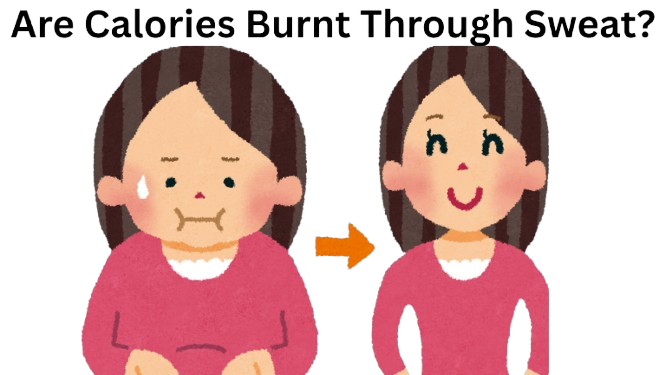
Common Misconceptions About Sweat and Weight Loss
Misconception: Increased sweating leads to greater fat loss.
Truth: Sweat is mostly water and not fat. Actual fat loss comes from a calorie deficit.
Misconception: Saunas help you burn fat.
Truth: Saunas lead to water loss rather than fat burning. The weight comes back when you drink fluids.
Misconception: Wearing sweat suits will speed up fat loss.
Truth: Sweat suits promote water loss, which is risky, as it leads to dehydration, but does not promote fat burning.
Misconception: If you do not perspire, it indicates that you are not exerting yourself sufficiently.
Truth: Sweat levels vary from person to person. Some people will burn serious calories without sweating profusely.
When is Sweating Beneficial for Weight Loss?
In simple terms, while sweating will not create fat loss on its own, it can be a part of it:
– Motivation – Sweating will make you feel like you achieved something and that can increase motivation.
~ Calorie burn – If you are sweating it usually means you are partaking in a high caloric activity (i.e. cardio, strength training, or HIIT).
~ Hydration – Paying attention to how much you sweat can help you ensure you are hydrating enough, and just to get hydration right can help with performance and metabolism.
So even though sweating is not the missing ingredient, a good sweat session is a great workout that helps create a path for long-term weight maintenance.
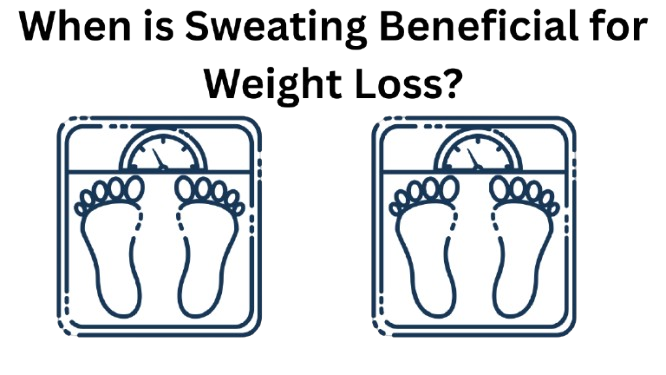
The Threats of Excessive Sweating for Weight Loss
Attempting to lose weight through the method of forced excessive sweating can pose significant dangers.The dangers include:
– Dehydration – Losing too much fluid can lead to dizziness, headaches, fatigue, to name a few.
– Electrolyte imbalance – Losing sodium, potassium, and other electrolytes from sweat can create many problems for your muscles and nerves.
– Heat exhaustion or heatstroke – Prolonged exposure to high temperatures, or overexerting your body with sweat-inducing garments, can result in a potentially fatal condition.
Safe weight loss is based on building habits that can be maintained long term, rather than short-term gimmicks.
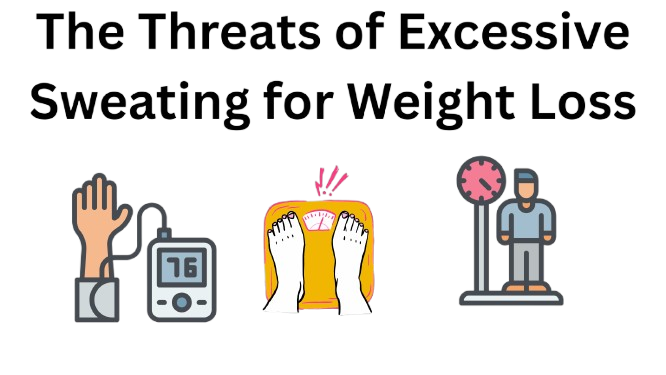
FAQs About Sweating and Weight Loss
Q1: Will I lose belly fat if I sweat more?
No. Belly fat is lost from total fat loss that is a result of diet and exercise, not sweating.
Q2: What is the reason athletes don sweat suits prior to competitions?
They aim to reduce water weight to comply with weight categories, rather than to decrease body fat.This means that the loss is temporary and can be dangerous.
Q3: Does sweat detox the body?
Sweat does remove a small amount of toxic substances from the body, but detoxification is done through the liver and kidneys.
Q4: Does hot yoga assist me with losing weight?
Hot yoga results in calories burned from the physical movement of the body. Not from the heat related sweat.
Q5: If I sweat does that mean I had a good workout?
Not necessarily. We measure a good workout by effort or intensity, or calories burned, NOT by sweaty!
Conclusion
While sweating may create the illusion of weight loss, it is crucial to understand that you are primarily losing water weight instead of fat weight. Genuine weight loss isachieved by maintaining a regular exercise routine, adhering to a balanced diet, and ensuring a calorie deficit.Sweating is only a secondary effect of a cooling system in your body, and is not the primary means of losing fat.
Instead of seeking out sweat, create sustainable habits such as eating healthy whole foods, exercising, staying hydrated, and being honest about progress over time. That is the found way to maintain weight loss through lifestyle change – not through the body temperature showing on your face in sweat.


